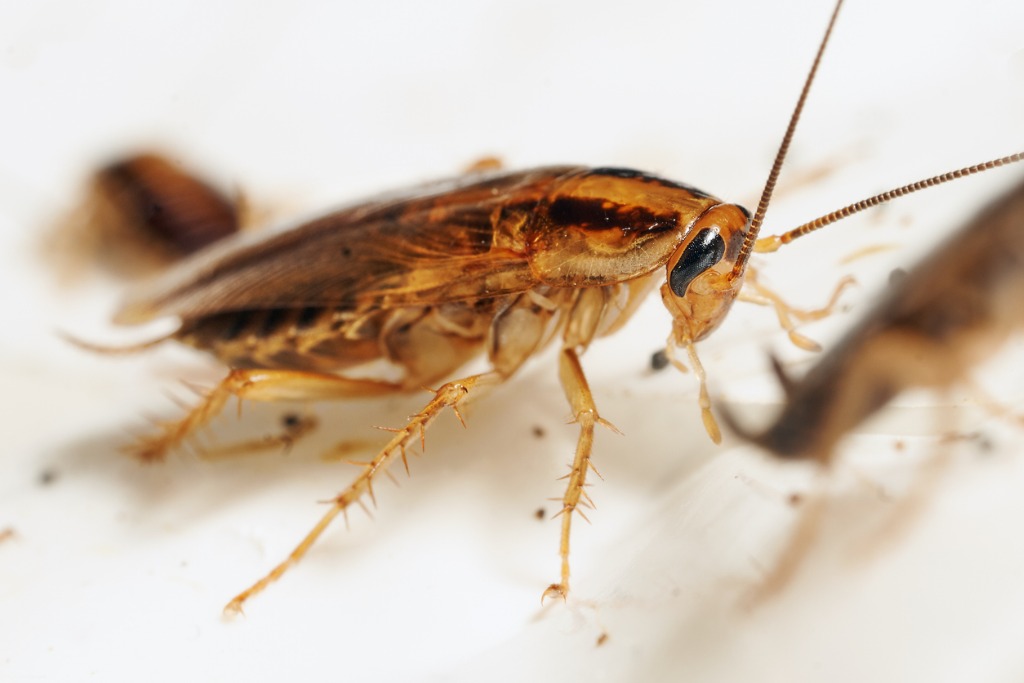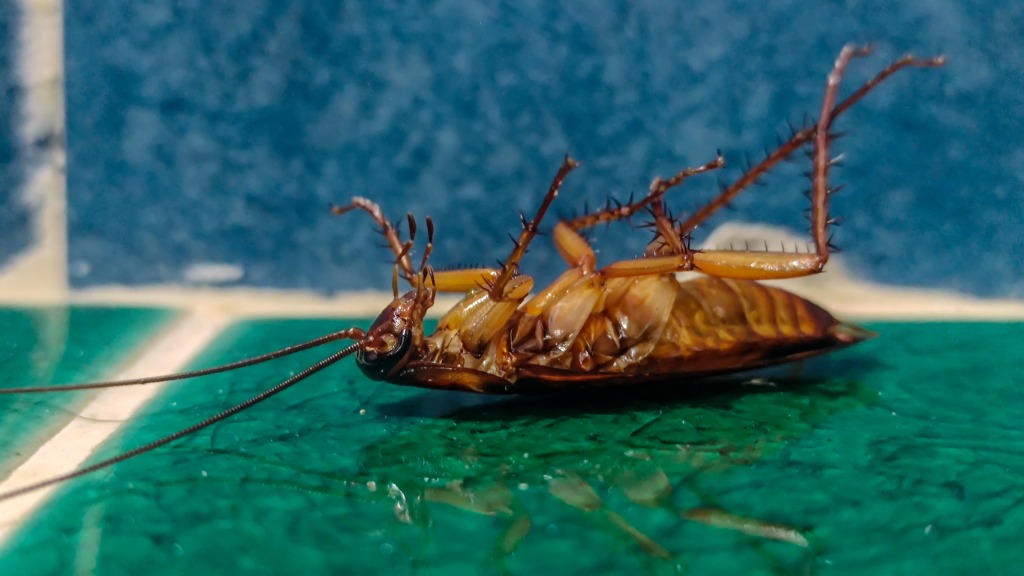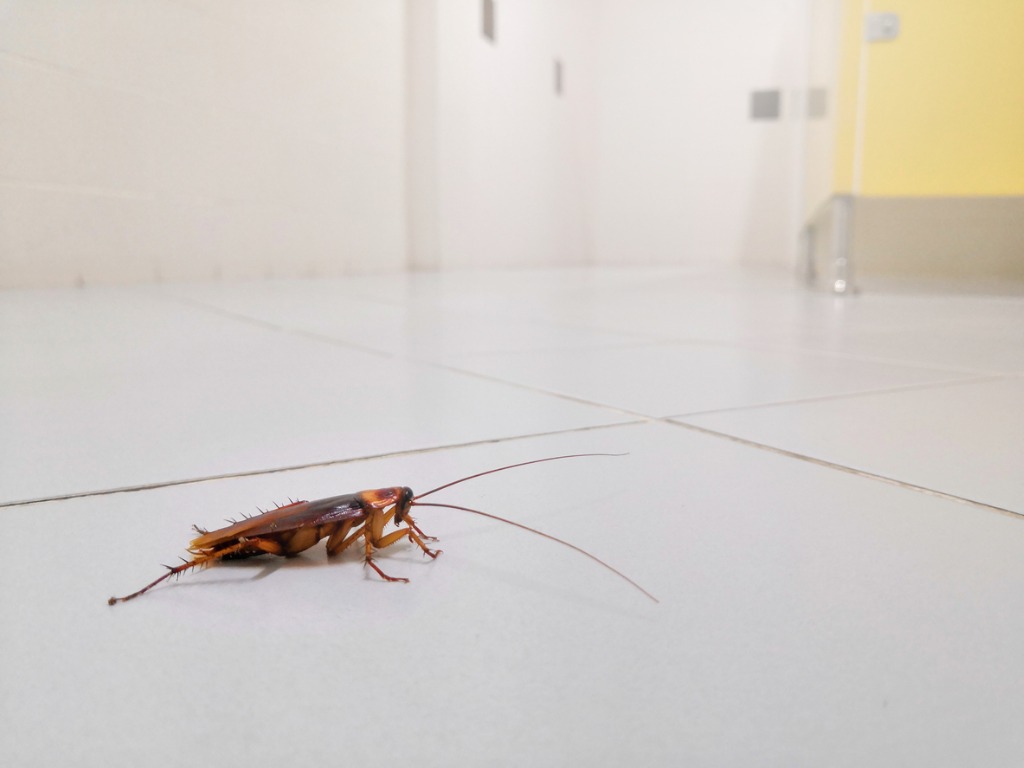Cockroach infestations are a common household menace that not only undermine the sanitary conditions of our living spaces but can also pose health risks due to the allergens they produce and the pathogens they carry. Detecting their presence early on is crucial, as this can prevent a small problem from escalating into a massive, hard-to-eradicate infestation. Understanding the telltale signs of a burgeoning cockroach problem is the first step towards ensuring a clean and healthy home.
Key takeaways
- Physical sightings indicate severe infestations
- Presence of feces, egg casings, and dead roaches
- Musty odors and allergic reactions suggest roach presence
- Maintain sanitation and seal entry points
- Utilize baits, traps, natural remedies, and IGRs
- Consider hiring professional exterminators if needed
Part I: Signs of a Cockroach Infestation
1. Physical Sightings of Cockroaches
Cockroaches are predominantly nocturnal creatures, often lurking in the shadows and venturing out predominantly at night to forage. Thus, if you spot them during the daytime, it’s a significant indication of a severe infestation, suggesting that the population has grown so large that some are forced out of their hiding spots even when they’d typically remain concealed.
2. Cockroach Feces

Cockroach feces can resemble ground coffee or black pepper, with their size and shape varying depending on the type of roach. Commonly found in places they frequent or inhabit, such as kitchen cabinets, behind appliances, and in dark crevices, these droppings can serve as a reliable sign of an infestation. To differentiate between roach droppings and those of other pests, note that cockroach feces often have a more granular or cylindrical appearance, unlike the more pellet-like feces of, say, rats or larger pests.
3. Egg Casings
Cockroach oothecae, or egg casings, are oval-shaped protective structures that house several roach embryos. These casings have a somewhat leathery texture and are typically brownish in color, varying in size depending on the cockroach species. Common hiding spots for oothecae include behind furniture, within cracks or crevices in walls, under sinks, and other secluded areas. Discovering these casings can be a clear sign of an active or impending infestation, as each can give rise to multiple new cockroaches once the eggs hatch.
4. Unpleasant Odor
A distinct musty or oily odor often accompanies a cockroach infestation, which is produced by the pheromones that these pests release. This smell, over time, can become overpowering, especially in confined spaces or in areas with a high roach density. While households may have various odors due to dampness, mold, or other factors, the cockroach-associated smell is unique in its earthy and repugnant nature. If an unexplained, lingering mustiness permeates your home, it could be a clear indication of a hidden roach problem.
5. Dead Roaches
Finding dead roaches, especially in areas like the basement, under sinks, near plumbing fixtures, or even in less-frequented corners of the home, is a telltale sign of an infestation. While it may seem reassuring to find them dead rather than alive, their presence, deceased or not, indicates an active population lurking nearby. Dead roaches often signify that the population has grown to the point where some individuals are unable to sustain themselves, or they might have been affected by some pest control measures already in place. Either way, it’s a clear alert to a roach problem.
6. Cockroach Smear Marks

Cockroach smear marks are dark, irregular streaks or smudges that are created when roaches scuttle over wet surfaces or if they are crushed in areas they frequent. These marks can often appear as irregular lines or blotches with a brown or black hue. They’re typically found in areas with high roach traffic, such as wall corners, behind appliances, or close to their food and water sources. These smear marks are especially evident in moist areas, like bathrooms or kitchens, and their presence can indicate a consistent path or a congregation point for these pests.
7. Evidence of Feeding
Evidence of cockroach feeding is not just limited to the conventional food items in your pantry. While they often leave clear bite marks on food packages, nibbling through cardboard, plastic, and even sealed containers, cockroaches are also known for their diverse palate. This means they can consume unconventional household items like glue, book bindings, wallpaper paste, and even soap. Finding inexplicable damage or gnaw marks on such items can be a strong indication of their presence, showcasing their relentless search for nutrients wherever they can find them.
8. Allergic Reactions
Cockroaches can be more than just a nuisance; their presence is directly linked to allergic reactions in many individuals. Cockroach allergens arise from their droppings, shed skins, and bodily secretions. When these particles become airborne or settle on surfaces, they can trigger allergies, especially in susceptible individuals. Common allergic reactions include sneezing, itchy eyes, skin rashes, and even asthma exacerbations. Notably, in urban environments, cockroach allergens have been identified as a significant contributor to asthma in children, underscoring the importance of addressing infestations not just for hygiene but also for health reasons.
9. Active Sounds at Night
As nocturnal pests, cockroaches are most active under the cover of darkness, and with their activity comes a set of sounds that can hint at their presence. The rustling or scuttling noises they make as they move around, often behind walls, within cabinets, or under appliances, can be a dead giveaway. These sounds, although subtle, are characterized by a light, rapid movement, distinct from the noises other household pests might produce. If you hear these sounds, especially when the household is silent at night, it’s a strong indicator that roaches might be exploring your home.
10. Irregularities in Appliances and Electronics
Cockroaches, especially drawn to the warmth and darkness of appliances and electronics, can wreak havoc on these devices. They often infest behind refrigerators, inside microwaves, or within electronic gadgets. Their droppings, bodies, and shed skins can cause short circuits or even damage electronic components. Signs of such infestations include devices malfunctioning without an apparent cause, or the sight of roaches when turning on or moving these appliances. A cockroach appearance from vents, crevices, or openings of these devices is a clear indication that they’ve found refuge within, potentially compromising the longevity and function of the equipment.
Part II: How to Address a Cockroach Infestation

1. Proper Sanitation
Maintaining proper sanitation is the cornerstone of preventing and managing cockroach infestations. A clean household, free from easily accessible food and water sources, reduces the attraction for these pests. It’s crucial to ensure that food is stored in sealed containers, leftovers are promptly refrigerated, and crumbs or spills are cleaned immediately. Leaving food out, especially overnight, is an open invitation for cockroaches to feast and proliferate. A rigorous cleaning routine, coupled with proper food storage practices, can significantly diminish the likelihood of these pests making a home in your living space.
2. Sealing Entry Points
One of the most effective preventive measures against cockroach infestations is identifying and sealing potential entry points. Gaps, cracks, and crevices in walls, floors, and around plumbing or electrical outlets can serve as gateways for these pests. Ensuring these openings are adequately sealed not only blocks their access but also restricts their movement within the premises. Regular home inspections, both internally and externally, are vital to spot and address these vulnerabilities timely. By proactively keeping a tight seal on your home, you significantly reduce the risk of these unwelcome guests establishing a foothold.
3. Using Cockroach Baits and Traps
Cockroach baits and traps are pivotal tools in both detecting and managing infestations. Effective baits typically contain attractants combined with slow-acting insecticides, ensuring roaches carry the poison back to their nests, thereby targeting the colony at large. Sticky traps, on the other hand, can help gauge the extent of an infestation and monitor the effectiveness of control measures. For optimal results, place these tools in areas of high roach traffic — under sinks, behind appliances, and along walls. Regularly checking and replacing them ensures continuous monitoring and effective mitigation of the pest population.
4. Natural Remedies
Turning to natural remedies can offer safe and environmentally friendly solutions for cockroach control. Diatomaceous earth, a fine powder derived from fossilized aquatic organisms, acts as a desiccant, drying out the cockroaches from the inside when ingested. Boric acid, another natural option, is toxic to roaches when consumed and can be sprinkled in areas they frequent. While these remedies are less harmful to the environment and humans, it’s essential to use them judiciously, especially if pets or small children are present, as ingestion in significant quantities can be harmful. Proper application ensures safety while combatting the pesky invaders.
5. Insect Growth Regulators (IGRs)
Insect Growth Regulators (IGRs) are synthetic chemicals that disrupt the growth and development of insects, effectively targeting cockroach populations by hindering their reproductive cycle. Rather than killing them outright, IGRs render them sterile or prevent them from reaching maturity, leading to a gradual decline in their numbers. Popular brands in the market, such as Gentrol and Archer, can be applied as sprays or point-source discs in areas frequented by roaches. The key is to use them as part of a broader pest control strategy, ensuring that while adult cockroaches are being tackled, their offspring’s growth and reproduction are simultaneously stymied.
6. Hire Professional Exterminators
When faced with a persistent or sizable cockroach infestation, hiring professional exterminators might become a necessity. These experts come equipped with the knowledge, tools, and strategies tailored to the specific type and scale of the infestation, ensuring a comprehensive approach. The benefits of professional intervention include the effective use of specialized treatments, safety precautions to protect household members and pets, and guidance on preventing future infestations. Moreover, exterminators often provide a guarantee on their service, ensuring peace of mind for homeowners who want to ensure their living spaces remain roach-free.
Conclusion
early detection and timely intervention are paramount when it comes to managing cockroach infestations. These resilient pests not only pose hygiene concerns but also potential health risks. By staying vigilant, understanding the telltale signs of their presence, and employing both preventive and active measures, homeowners can protect their living spaces from these unwelcome intruders. It’s essential to remember that a proactive approach, combining regular inspections with consistent preventive practices, offers the best defense against these persistent pests, ensuring a clean, healthy, and roach-free environment.

